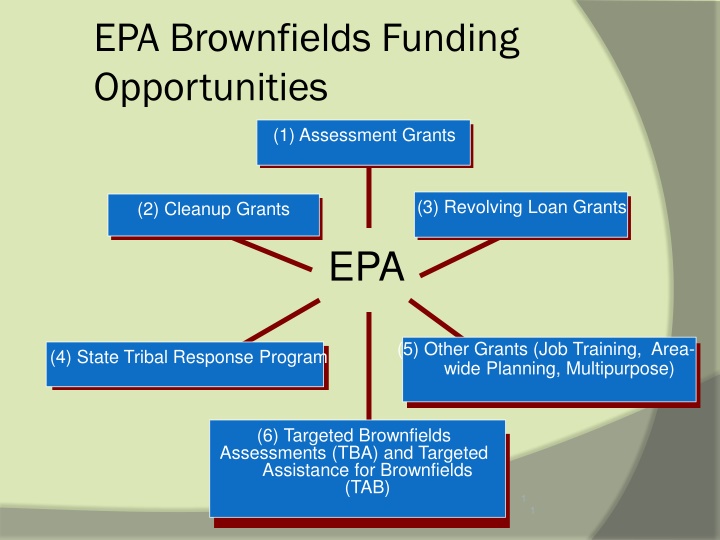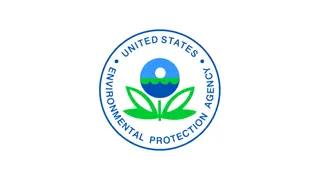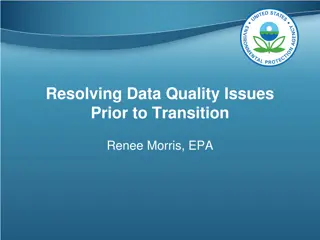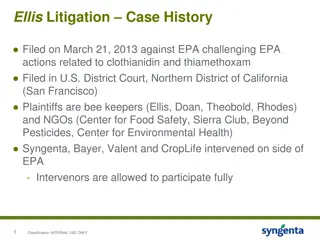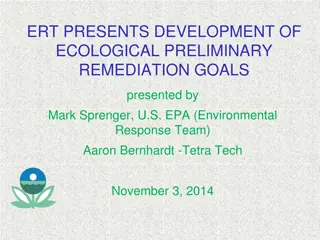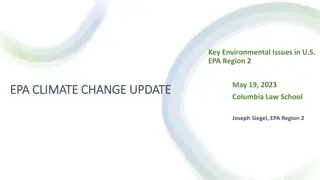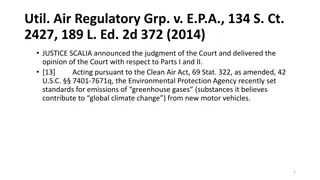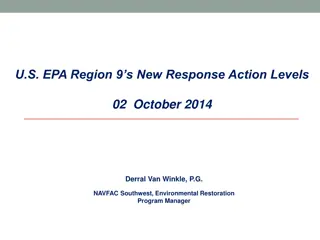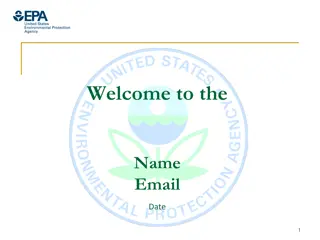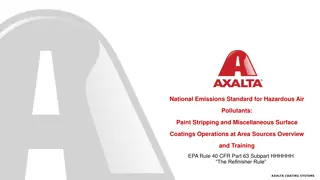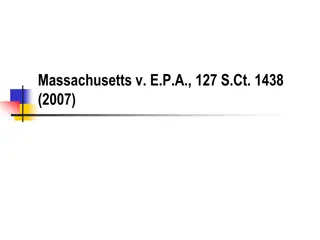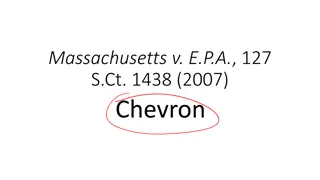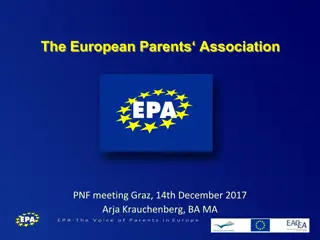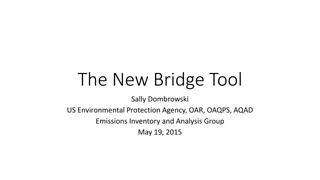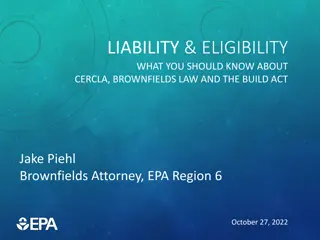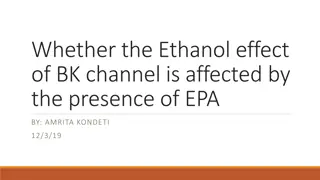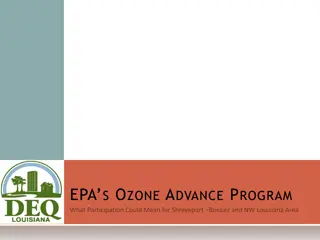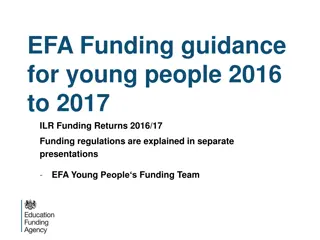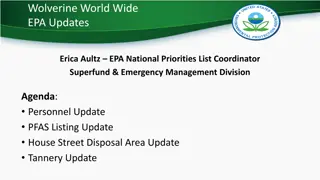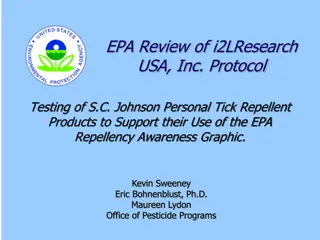EPA Brownfields Funding Opportunities
The latest funding opportunities under the EPA Brownfields Program, including assessment grants, cleanup grants, and more. Learn about the BUILD Act and how it impacts contaminated site redevelopment.
Download Presentation

Please find below an Image/Link to download the presentation.
The content on the website is provided AS IS for your information and personal use only. It may not be sold, licensed, or shared on other websites without obtaining consent from the author.If you encounter any issues during the download, it is possible that the publisher has removed the file from their server.
You are allowed to download the files provided on this website for personal or commercial use, subject to the condition that they are used lawfully. All files are the property of their respective owners.
The content on the website is provided AS IS for your information and personal use only. It may not be sold, licensed, or shared on other websites without obtaining consent from the author.
E N D
Presentation Transcript
EPA Brownfields Funding Opportunities (1) Assessment Grants (3) Revolving Loan Grants (2) Cleanup Grants EPA (5) Other Grants (Job Training, Area- wide Planning, Multipurpose) (4) State Tribal Response Program (6) Targeted Brownfields Assessments (TBA) and Targeted Assistance for Brownfields (TAB) 1 1
NEW THIS YEAR Brownfields Utilization, Investment, and Local Development (BUILD) Act signed into law in March Fall New Solicitation for Multipurpose, Assessment, and Cleanup Grants MAC Competition
The Brownfields Utilization, Investment, and Local Development Act (BUILD Act) Enacted on March 23, 2018 Reauthorized EPA s Brownfields Program Amended the original Brownfields law 2002 Small Business Liability Relief and Brownfields Revitalization Act Made changes to our brownfields grants, ownership and liability provisions, and state and tribal response programs
BUILD Act Local or state governments that take control of a contaminated site no longer has to be an involuntary acquisition. Allowscontrol through law enforcement activity, bankruptcy, tax delinquency, abandonment, or other circumstances
BUILD Act Bona Fide Prospective Purchaser definition was amended to include language related to those who have tenancy or leasehold interests in the facility. Removed the language and requirement that petroleum brownfield sites be of relative low risk in order to be eligible for funding.
BUILD Act Non-profits (including LLCs and community development entities that are non-profit) can now apply for all brownfields grants (including assessment and RLF grants). - IRS 501(c)(3) Publicly owned sites acquired prior to January 11, 2002 can receive brownfields grant funding as long as the entity is not responsible for the contamination.
BUILD Act New ranking criteria focusing on renewable energy or any energy efficiency projects and waterfront developments (adjacent to a body of water or a federally designated flood plain). Entities are now able to use up to 5% of grant awards on administrative costs.
BUILD Act Increased the cleanup grant funding amount to $500,000 per site; eligible entities can also request a waiver to $650,000 per site, based on the anticipated level on contamination, size, or ownership status of the site. Grant authority for Multipurpose Grants (assessment and cleanup combination) was increased up to $1,000,000. No more than 15% of the total appropriation can be awarded to Multipurpose Grants.
BUILD Act Authorized a new grant program for states and tribes to provide training, technical assistance, or research for small communities (<15,000), Indian tribes, rural areas, and disadvantaged areas. Maximum of $20,000 per community and one per state/tribe. Authorizes the competitive grants to $200 Million for FY 2019 through 2023 Authorization is not appropriation, which is done by Congress yearly
FY19 Program Highlights Multipurpose, AssessmentandCleanup Guidelines Next Month (only weeks away) Community-wide Assessment - Hazardous Substances vs Petroleum Apply for up to $300,000 can be any amount and any combination Coalitions (up to $600k) and Site-specific Assessment ($200k or waiver to $350k) grant amounts are not changing from FY18 Environmental Workforce Development and Job Training Grant RFP to be issued in the spring with awards in FY20
FY19 Program Highlights (continued) No new RLF competition until FY20 Only supplementals in FY19 No more separate AWP grant competition Planning activities have always been eligible under the Assessment grant including: Land Use Assessment Site Reuse Assessment Market Evaluation Market Analysis Infrastructure Evaluation Site Design/Reuse Vision Redevelopment Planning Development of a Target Area-wide plan
FY19 Program Highlights Cleanup Grants Applicants can apply for up to $500,000 to address one or more brownfield sites within one proposal and only one proposal per applicant. Although the BUILD Act allows it, we will not increase it to $650,000 this year. Tribes, nonprofit organizations, and local governments with a population < 50,000, may request a cost-share waiver.
FY19 Program Highlights Multipurpose Grants Applicants can apply for up to $800,000 to complete at least one Phase II environmental site assessment, one cleanup, and an overall plan for revitalization. In addition to those activities, recipients can develop brownfields inventories and cleanup plans, prioritize sites & conduct community involvement activities. Eligible entities include the same as those that can apply for assessment and cleanup grant funding. Coalitions cannot apply for Multipurpose Grants this pilot year.
FY19 Program Highlights Multipurpose Grants If you apply for a MP grant, you cannot apply for an assessment or cleanup grant this year. EPA anticipates being able to award approximately 10 MP grants in FY19. MP Recipients will be required to provide a $40,000 cost-share. The cost-share can be met by a range of activities associated with the assessment and/or cleanup, such as a contribution of money, labor, material, or services from a non-federal source. No cost-share waivers will be allowed this year.
FY19 Program Highlights Multipurpose Grants Multipurpose Grant applicants must own at least one site within their target area by the time of the proposal submittal date (December most likely). Additional sites may be acquired and addressed after the award, but at the time of application the applicant needs to affirm they own an eligible site that could be addressed under the grant. The threshold criteria will require applicants to affirm they own a site that meets the federal definition of a brownfields.
Acquiring a PropertyAll Appropriate Inquiry (AAI) Must conduct Phase I (or equivalent) within six months prior to acquisition if claiming protection from liability. If Phase I is older than 180 days, must be updated. Remedial Investigations/Feasibility Studies do not fulfill AAI requirement. 16
Brownfields Revitalization EPA Brownfields Program Prospective Purchaser State Brownfields Program Brownfields Site Revitalization Leveraged Resources $$$ Community Developer Professional Environmental Consultant
Region 10 EPA Brandon Perkins, U.S. EPA perkins.brandon@epa.gov (206) 553-6396 Tara Martich, U.S. EPA martich.tara@epa.gov (907) 271-6323 Mary Goolie, U.S. EPA goolie.mary@epa.gov (907) 271-3414 18
